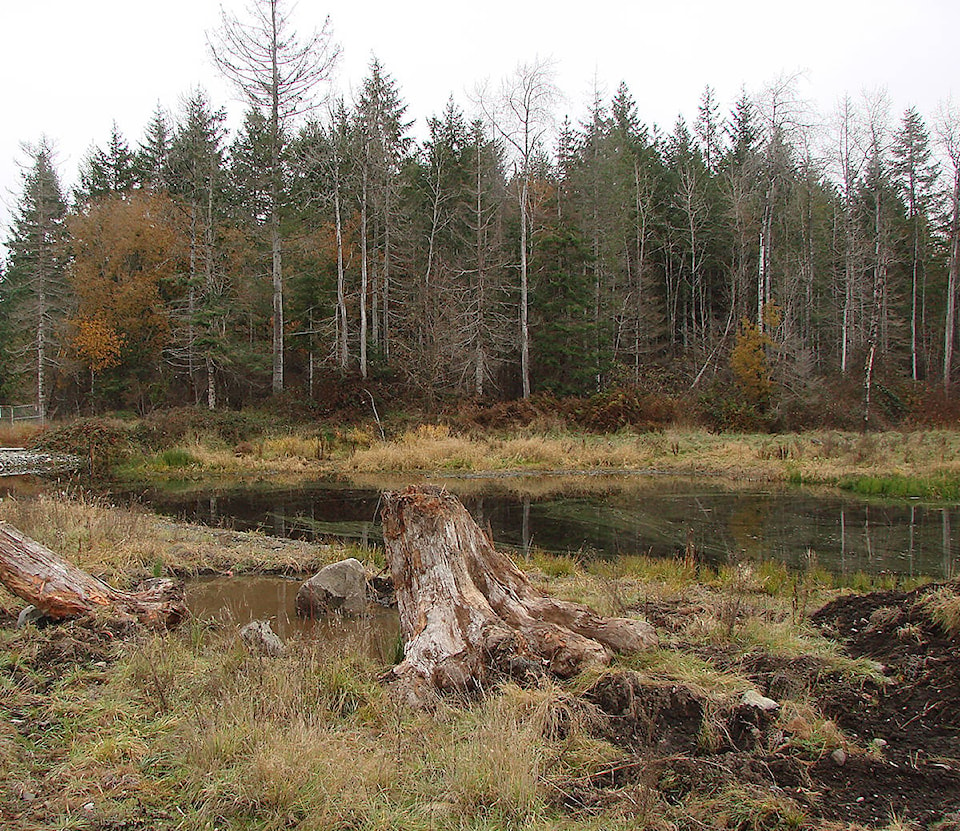With construction complete to restore a wetland in Jubilee Heights, five years of monitoring and measuring results begins soon.
Late this summer, work with heavy equipment put final touches on restoring the area that had previously been filled in. To diversify habitat and encourage plant growth, the area now has more coarse woody debris, additional deep and shallow depressions, bank edges are less steep, and soil in some areas was loosened and roughed up to help extensive plantings establish root systems.
“The original fen peatland took literally thousands of years to develop, so it’s impossible to replace exactly what was there, but this work has created satisfying complexity for a new wetland. Ranging from larger areas of open water to small deep pools and shallow depressions, this habitat variety is vital for wetland plants and creatures,” says Terri Martin, the City’s environmental specialist. “It’s also encouraging to see the amount of natural generation from seeds and plant remains in the original soils and peat that had been stockpiled. This really boosts the potential for a wetland to function here.”
The project’s lead biologist, Warren Fleenor of Current Environmental, emphasizes the critical design insight provided by Elke Wind, an amphibian specialist working on the project. “This restoration includes isolated amphibian breeding areas that will provide some protection from adult northwestern salamanders, which eat all other amphibian species,” Fleenor says.
Fleenor also noted only a few clumps of reed canary grass are present. This persistent invasive plant that can rapidly colonize and infill wetlands will be dug out by hand this winter.
“The top priority is to ensure the new wetland will hold water,” Martin continues. “While different from the original, this restoration area will provide wetland values. Water levels have been holding up very well and will continue to be monitored.”
Parkway Properties must now register a conservation covenant on the 2.1 hectares of forest land near the west property boundary that is part of the conservation solution as set out in the City’s development permit. The development permit also specifies that a conservation covenant be placed on the wetland.
This winter, a post-development report summarizing restoration work and a survey of as-built areas of habitat, along with a five-year post-construction monitoring plan will be prepared. Ongoing monitoring and measurement of key ecological attributes will use accepted scientific methods and best practices, and include evaluation of wildlife use, vegetation and invasive species establishment, and water elevations throughout the year.
Please direct questions about the restoration plan to Terri Martin, the City’s environmental specialist via email to terri.martin@campbellriver.ca or call 250-286-5711. The City will continue to issue news releases on the progress of the wetland restoration.
